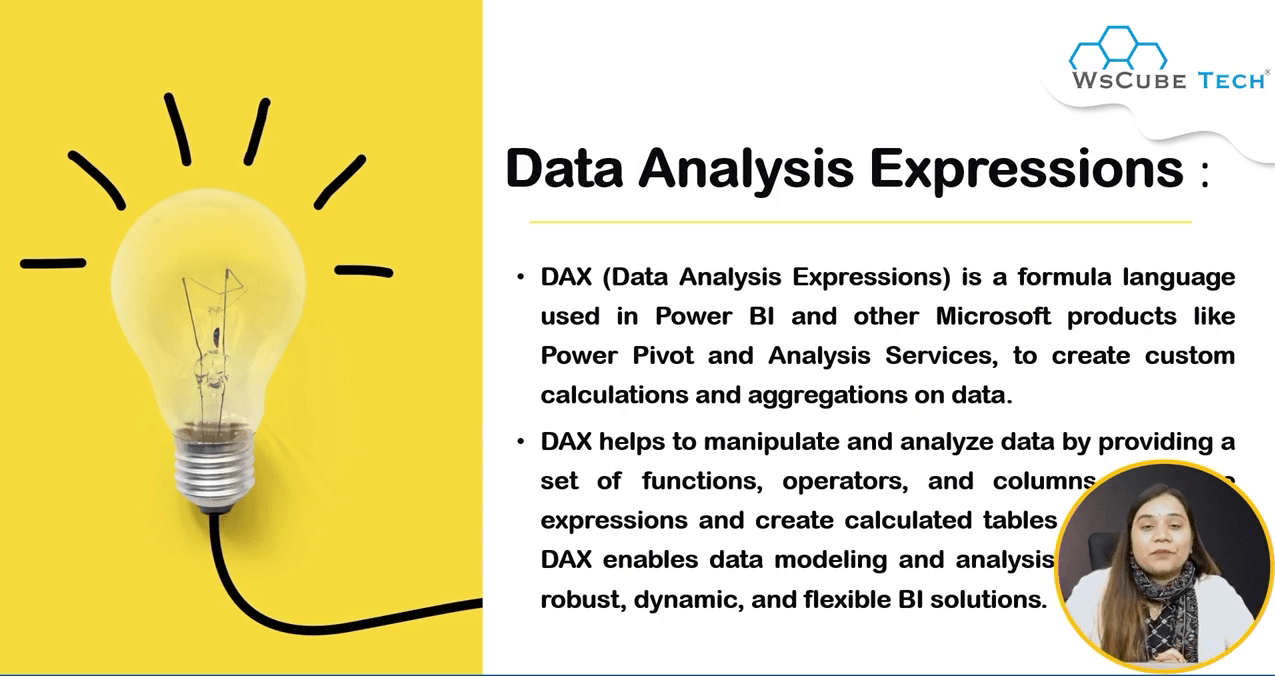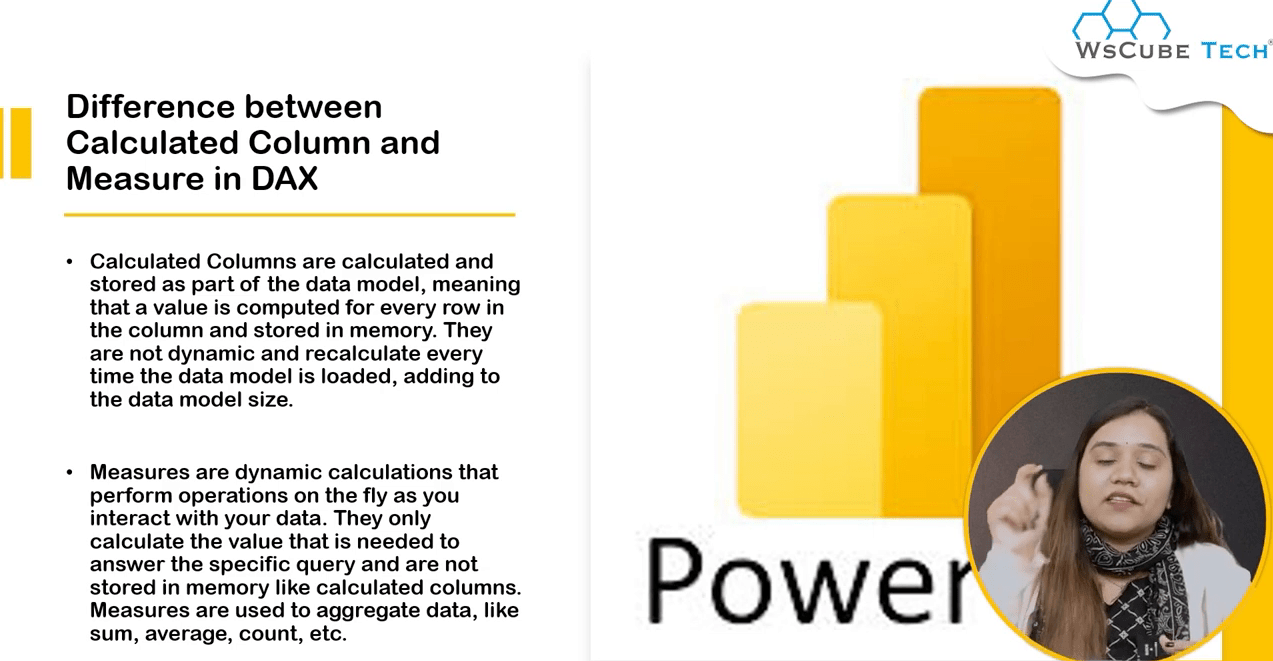Power BI DAX Tutorial for Beginners | How to Use DAX Function in Power BI with Examples
We’re glad to have you here on the best Power BI DAX tutorial for beginners. When it DAX Power BI Basics Understanding It is fair to say DAX is worth learning in order to use Power BI in a more competent way. Formulas can be created through DAX, an analysis expression with the ability to define calculations performed on the data. In this tutorial, you will be introduced to various functions and features of DAX, and other useful tips which will enhance your understanding of DAX with the help of illustrations. Get ready to start!
Table of Contents
- 1. Introduction to DAX
- 2. Purpose of DAX
- 3. Data Analyst Training
- 4. Understanding Calculated Columns
- 5. Aggregation and Grouping
- 6. Function Types in DAX
- 7. Creating and Using Measures
- 8. Examples of Using Functions
- 9. Logical Functions in DAX
- 10. Using Operators in DAX
- 11. Concatenation and Text Functions
- 12. Final Remarks and Course Promotion
1. Introduction to Power BI DAX Tutorial for Beginners 🤔
DAX is defined to be Data Analysis Expressions which can also be found in Power BI and Excel. It enables users to build their own calculations and data models. Due to DAX, analysts can carry out complex data operations that can result in better analyses and reporting.`

2. Purpose of DAX 🔍
The main purpose of DAX is to facilitate calculations based on data within Power BI. This language allows users to create calculated columns, measures, and various functions aimed at deriving actionable insights. Understanding how to utilize DAX correctly will enable users to visualize data effectively and gain deeper insights into trends and patterns.

3. Data Analyst Training 🎓
For aspiring data analysts, training in DAX and Power BI can significantly enhance career prospects. Many platforms now offer demo classes and full courses designed to provide hands-on experience with DAX functions and Power BI dashboards, empowering future analysts to excel in data-driven environments.

4. Understanding Calculated Columns 📊
Calculated columns in DAX are used to add new data to your data model. Unlike measures, which are dynamic and recalculated based on the context of the data being analyzed, calculated columns are static, retaining their values until the underlying data changes. This distinction is important when deciding how to structure your analysis and the performance implications of each approach.

5. Aggregation and Grouping 📈
Aggregation functions are pivotal in analyzing data sets. They allow users to summarize large volumes of data into consumable insights. In DAX, functions like SUM, AVERAGE, and COUNT are used to perform these calculations. Grouping data effectively allows for clearer visualizations and more refined reporting.
6. Function Types in DAX 🗂️
DAX functions are categorized into various types, including statistical, text, logical, and date/time functions. Each type serves a specific purpose in data manipulation. For example, statistical functions are essential for performing calculations on numerical data, while text functions help in managing and formatting string data. Understanding these categories will greatly improve your expertise in using DAX.

7. Creating and Using Measures :Power BI DAX Tutorial for Beginners ✅
Measures are particularly useful for creating dynamic calculations that respond to changes in report context. In Power BI, measures are calculated at the time of report rendering, using the FILTER and CALCULATE functions to manipulate underlying data. This dynamic nature allows for real-time insights and enhances the interactivity of reports. Here’s a simple example: Total Sales = SUM(Sales[Amount]) creates a measure to sum up sales amounts dynamically.

8. Examples of Using Functions ✨
Practical examples enhance understanding. For instance, to calculate the average sales amount, you would use: Average Sales = AVERAGE(Sales[Amount]) . This showcases how DAX syntax operates and helps to visually convey data insights through calculated measures in your reports. The use of conditional statements can also personalize analyses based on specific criteria.
9. Logical Functions in Power BI DAX Tutorial for Beginners 🔑
As in other programming languages, IF, AND, OR logical functions are extensively used in DAX for decision making processes. They help in filtering the data for particular conditions. For instance, the IF function makes it possible for an analyst to include measure calculations which change depending on certain variables, providing for more thorough analyses and even better decisions on a strategic level.

10. Using Operators in DAX ➕
DAX has a number of operators such as arithmetic, comparison and logical operators, which aids to create sophisticated expression. It can also be noted that knowledge of these operators will assist in performing advanced calculations. For instance, one can use the subtraction operator (-) to derive profits in the following way: Profit = Sales[Revenue] – Sales[Cost].
11. Concatenation and Text Functions :Power BI DAX Tutorial for Beginners ✍️
DAX has very handy text functions which are of great significance when handling string values. One of these is the CONCATENATE function. This operation is helpful when composing dynamic content for messages or when designing headers for reports. For example, Full Name = CONCATENATE(Employee[FirstName], Employee[LastName]) combines first and last names into one field instead of two.

12. Final Remarks and Course Promotion 🎉
One of the most important skills a person can learn in relation to data analysis is the ability to work with DAX in Power BI. In this tutorial, the basic concepts and examples have been provided so that you are energized to set off on a journey of analysis. Do not hesitate to look deeper into Power BI and think about signing up for courses providing practical knowledge. Best wishes in your thirst for knowledge in the future!
